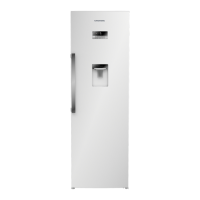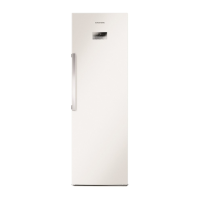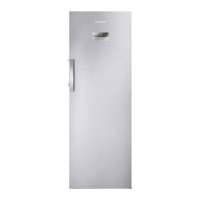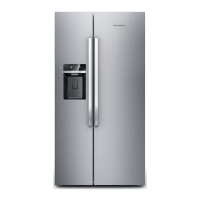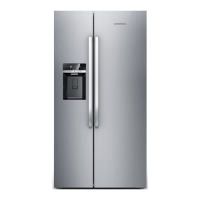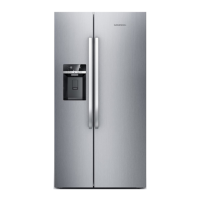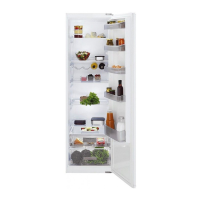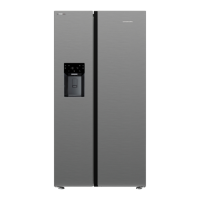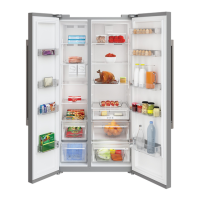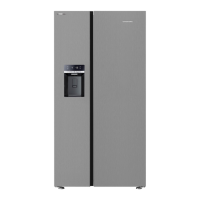Do you have a question about the Grundig GSN 30710 DW and is the answer not in the manual?
Provides essential safety guidelines for operating the appliance, covering user restrictions and general precautions.
Warns about the specific risks associated with R600a refrigerant gas in the cooling system.
Outlines specific safety and installation requirements for models equipped with a water dispenser.
Details the appropriate and inappropriate applications for the appliance to prevent misuse and damage.
Provides guidelines to protect children from potential hazards associated with the appliance and its packaging.
Covers WEEE and RoHS directive compliance and proper disposal of packaging materials.
Guides on selecting a suitable place for installation, considering heat sources, ventilation, and floor surface.
Explains how to install plastic wedges to ensure proper air circulation between the product and the rear wall.
Details the correct procedure for connecting the product to a grounded electrical outlet and relevant safety warnings.
Provides information on the refrigerator's illumination lamp and advises contacting service for replacement or issues.
Offers practical tips and guidelines to optimize the appliance's energy efficiency during operation.
Guides the user through the necessary steps and checks before the first use of the refrigerator.
Explains the various icons and indicators on the appliance's control panel and their functions.
Explains the Vacation mode indicator and the warning for high temperature or errors.
Details economic usage and energy saving indicators for optimal operation and power conservation.
Explains how to activate and use the Key Lock Mode and its indicator for display security.
Provides instructions on how to use the water dispenser, including normal operational characteristics.
Guides on how to correctly fill the water dispenser tank with drinking water and warnings against other liquids.
Details the steps for safely removing and cleaning the water tank and dispenser components.
Explains the function of the drip tray and how to remove and clean it to manage spilled water.
Describes how to best utilize the interior shelves and compartments for storing different types of food.
Provides guidance on food storage within the fridge compartment and placement of specific items.
States that the appliance performs automatic defrosting, requiring no user intervention.
Advises that changing the door opening direction should only be done by authorized service agents.
Provides tips to prevent unpleasant odours by maintaining cleanliness and proper food storage.
Advises on how to prevent damage to plastic surfaces from oils and spills, and how to clean them.
Lists common causes and solutions for the appliance failing to operate, such as power plug and fuse issues.
Explains reasons for condensation and provides solutions related to door opening frequency and humidity.
Addresses issues with the compressor not starting, including thermal safeguards and defrost cycles.
Discusses variations in operating noise and factors affecting refrigerator runtime.
Solves problems with excessively low or high temperatures in the cooler or freezer compartments.
Discusses causes of shaking or noise, including uneven ground and internal component operations.
Explains normal operating noises like liquid flow, fan sounds, and items placed on the appliance.
Provides solutions for bad interior smells and issues with the door not closing properly.
Covers troubleshooting for jammed vegetable bins and explains normal hot surface temperatures.
| Appliance placement | Freestanding |
|---|---|
| Product colour | White |
| Built-in display | Yes |
| Climate class | SN-T |
| Noise level | 42 dB |
| Fridge interior light | Yes |
| Lamp type | LED |
| Number of vegetable drawers | 1 |
| Egg balcony | Yes |
| Bottle rack | Yes |
| Freezing capacity | 4 kg/24h |
| Number of freezer drawers | 3 |
| Star rating | 4* |
| Energy efficiency class | A+ |
| Width | 60 cm |
| Height | 185 cm |
| Defrost System | Automatic |
| Weight | 67 kg |
| Storage time during power failure | 18 h |
| Depth | 65.5 cm |
| Number of shelves/baskets in fridge | 4 |
